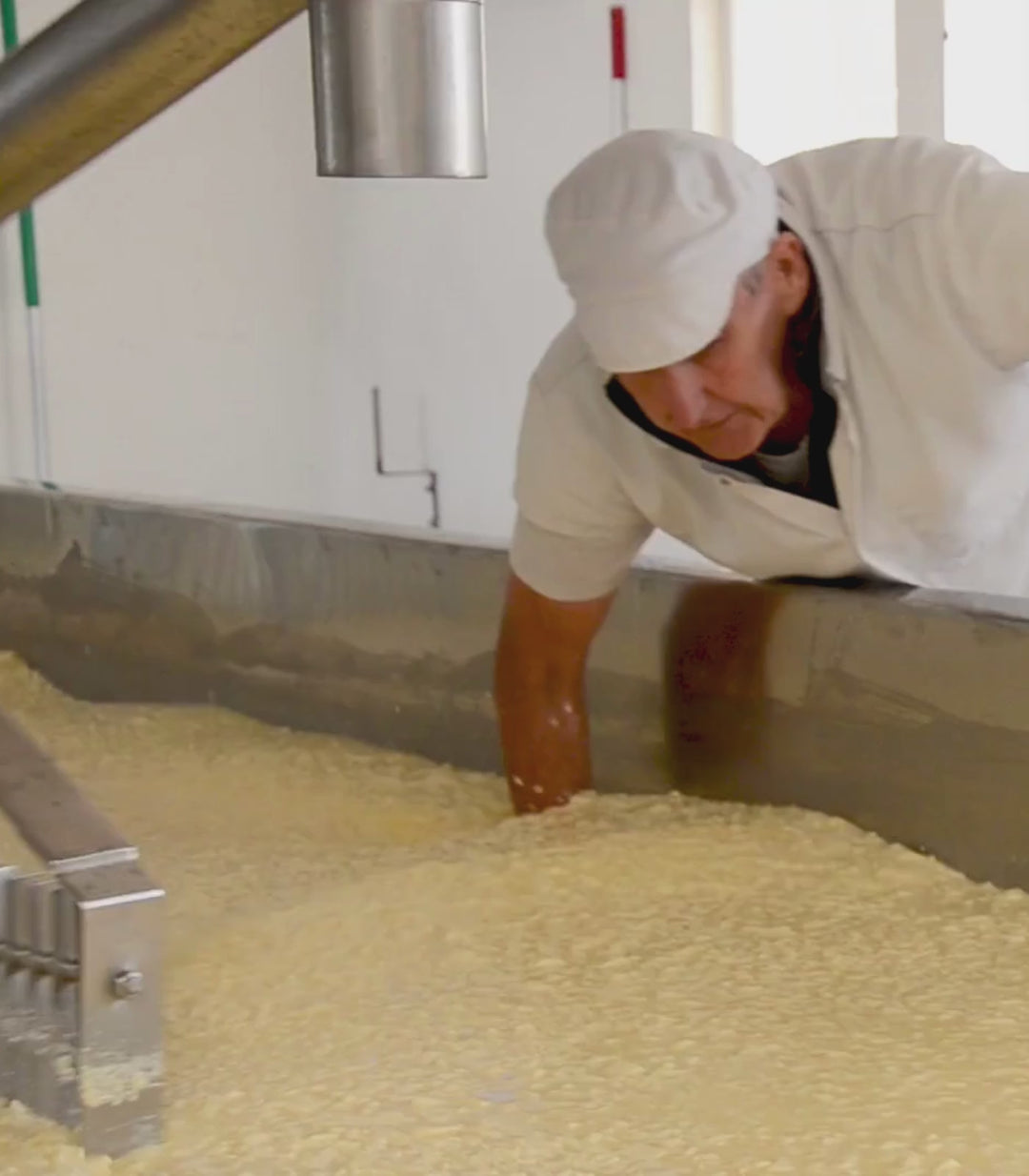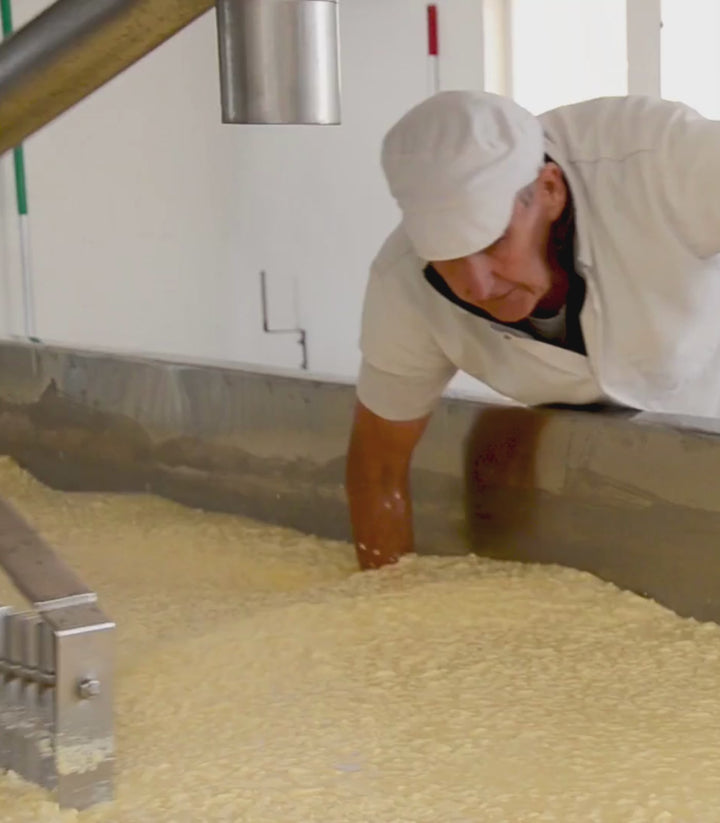Made by Paul & Sarah Appleby
Shrewsbury, Shropshire
Appleby's is one of the only raw milk, clothbound, farmhouse Cheshires still in production, despite this once being the most famous of all British cheeses.
Since 1952, the Appleby family have been making Cheshire cheese at their dairy farm, Hawkstone Abbey Farm on the border of Cheshire and Shropshire. Sarah and Paul Appleby are the third generation at the farm, with Paul heading up the cheesemaking. Theirs is one of a small number of raw milk, clothbound, farmhouse Cheshire being made in England: quite something when you consider there were once two or three thousand Cheshire producers and that Cheshire played a central role in the heritage of British cheese.
Our work with the Applebys began in the 1980s when the family began to seek alternative markets for their unwaxed, raw-milk cheese. Unlike the supermarkets, which value the ease of production line cutting offered by wax coatings, Neal's Yard Dairy appreciates the distinctive texture and flavour that result from binding the cheese in cloth.
We visit the farm once a month on our selection trips to the North, and taste through all the batches of cheese produced since the previous visit, assessing them by texture, colour and flavour. In our own way, we're continuing the work of the 'cheese factors' who once selected Cheshire for the London market. Today we're looking for a bright cheese with a juicy acidity and a characteristic crumble. It's a cheese that we will sell around 3 months, when its character is fully formed but still milky fresh.











